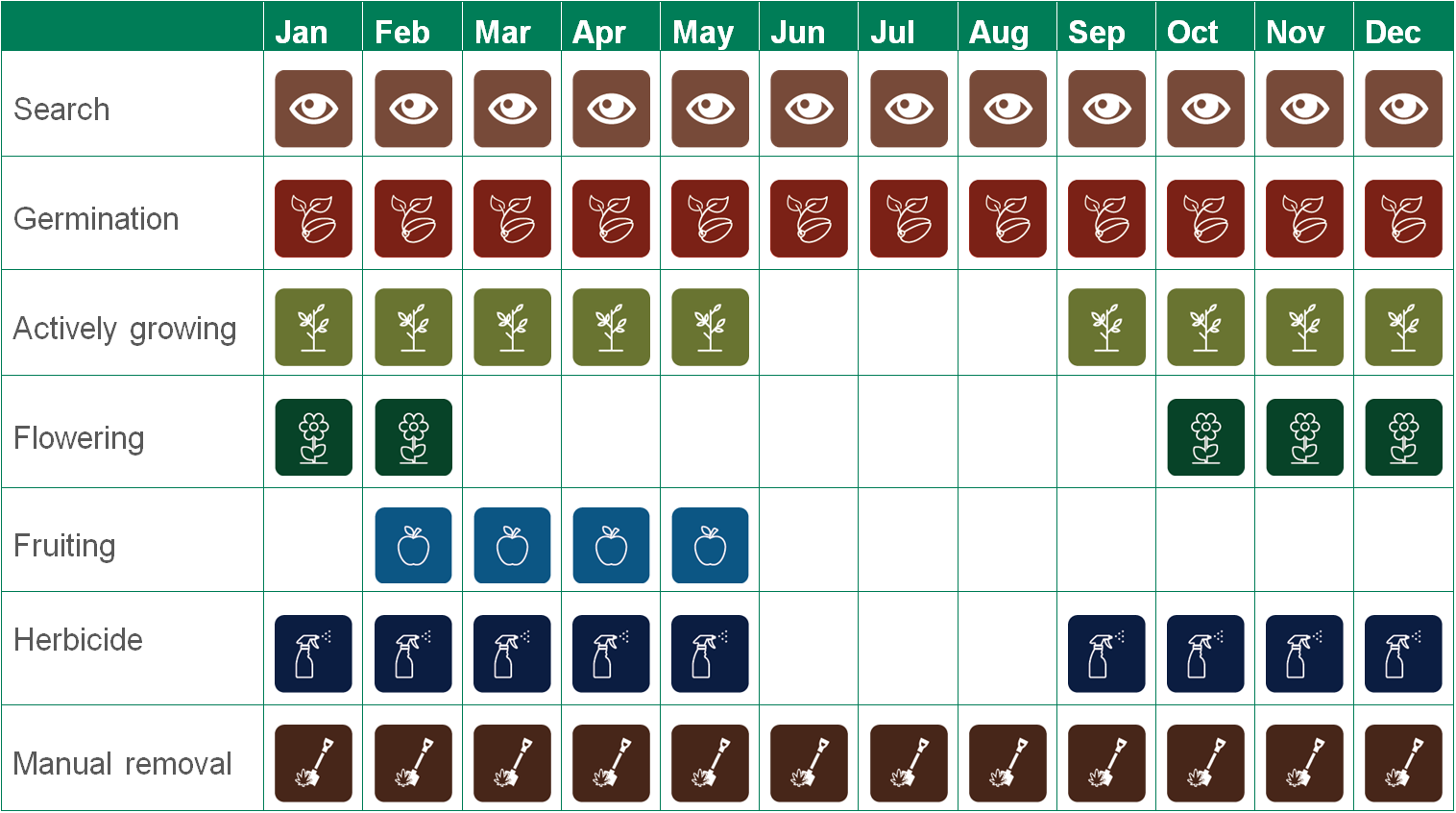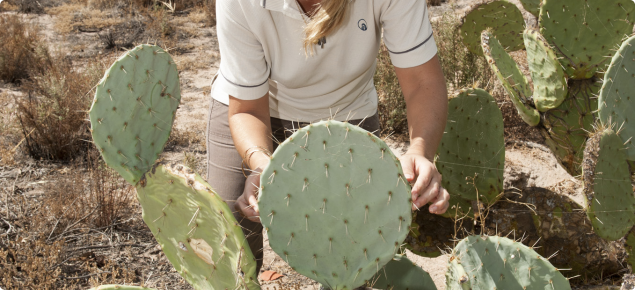Form: shrubby/tree-like
Status: under eradicaton
Due to the limited number of infestations and the potential for rapid spread in Western Australia, wheel cactus is one of the highest priorities for eradication. Opuntia robusta has been prioritised at a national level as a Weed of National Significance.
Appearance
Habit: shrubby/tree-like to two metres tall. Many branches.
Pads or segments: blue green. Circular shape, thick profile, to 40 centimetres wide.
Flowers: yellow.
Fruit: fleshy, globular shaped, to eight centimetres long. Deep red. Numerous fertile seeds.
Spines: 2-12 spines, up to five centimetres long. White to pale brown or yellow.
Online weed identification training
Login or set up a new account on DPIRDs online training site to access:
- a training course on how to identify wheel cactus and report it.
- training material that you can use to teach community groups how to identify wheel cactus.
Agricultural and economic impact
Wheel cactus is spread by birds (as well as humans) and has the potential to infest many thousands of hectares in southern WA. It can form dense impenetrable thickets about two metres high (possibly up to four metres).
Declared pest category
The Western Australian Organism List (WAOL) contains information on the area(s) in which this pest is declared and the control and keeping categories to which it has been assigned in Western Australia (WA). Use the links on this page to reach wheel cactus in WAOL.
Requirements for land owners/occupiers and other persons
Requirements for land owners/occupiers and other persons if this pest is found can be sourced through the declared plant requirements link.
Search > detect > report
| MyPestGuide™ Reporter | Pest and Disease Information Service (PaDIS) |
Detectability: easy to find. Wheel cactus is the only Opuntia species in Australia to have round pads. Other Opuntia species have oval, oblong or tear drop-shaped pads. The closest in appearance to wheel cactus would be Opuntia engelmannii which has a lower, more creeping habit and is green rather than blue-green. The combination of large, circular, blue-green pads makes wheel cactus distinctive. Old plants can be large and conspicuous, especially if surrounded by juvenile plants.
Who is likely to find it: potentially anyone in the South West Land Division could find wheel cactus. There could be infestations or plants in cultivation.
When to find it: being a perennial, and with its distinctive round blue-green pads, wheel cactus could be found at any time of year.
Where to find it: Wheel cactus could be found growing in the wild or in cultivation. So far the largest infestations have been found in the Wheatbelt. Wheel cactus has been found in cultivation in Mt Magnet, the Wheatbelt and several locations in the Perth metropolitan area and Southwest.
Control methods
Report the presence of this organism before undertaking a control measure. Control methods for this declared plant can be found through the Opuntioid cacti best practice control manual or the opuntioid cacti control link.
Management calendar
Further Information
For more information on wheel cactus dowload the wheel cactus fact sheet or download the Opuntioid cacti best practice control manual.



